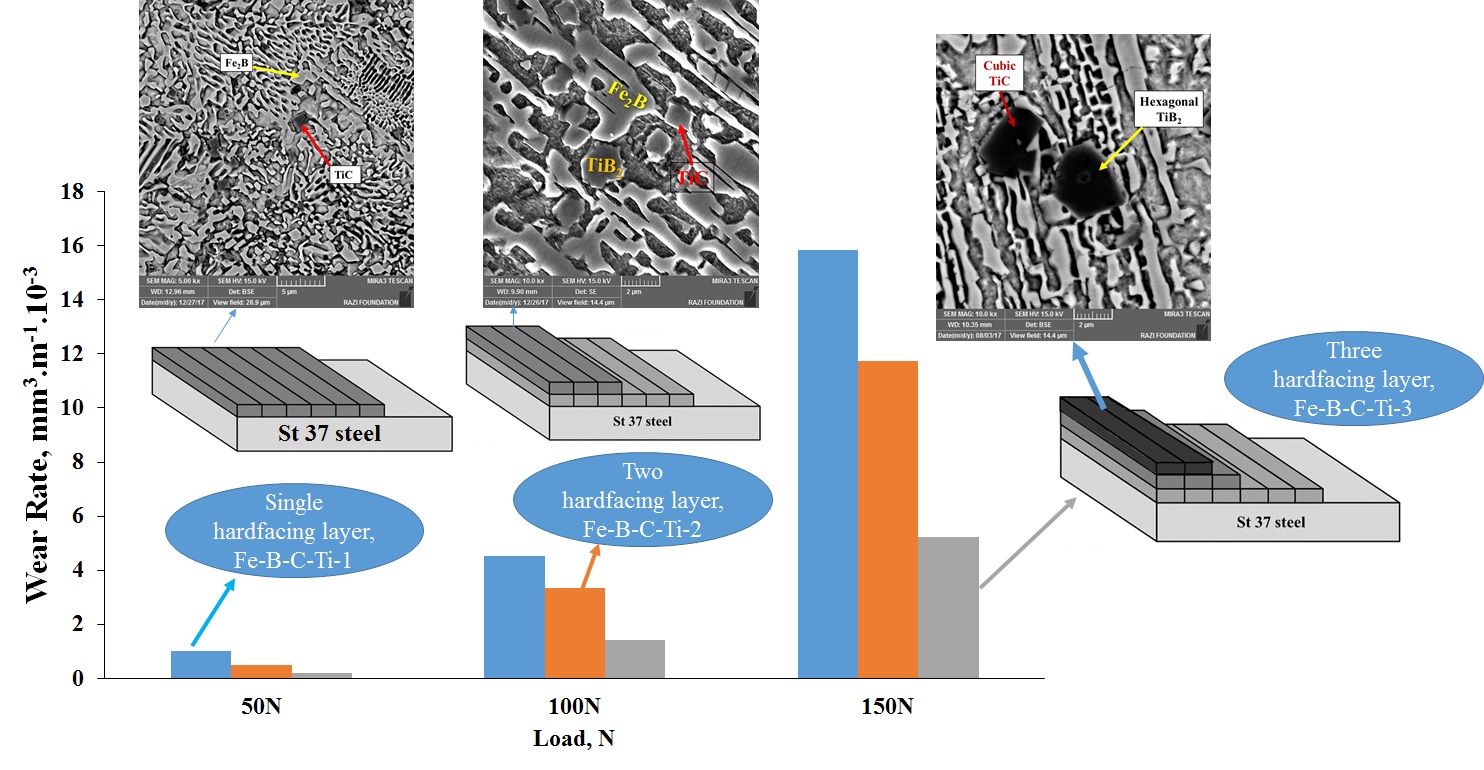Wed, Dec 17, 2025
[Archive]
Volume 15, Issue 4 (December 2018)
IJMSE 2018, 15(4): 19-32 |
Back to browse issues page
Download citation:
BibTeX | RIS | EndNote | Medlars | ProCite | Reference Manager | RefWorks
Send citation to:



BibTeX | RIS | EndNote | Medlars | ProCite | Reference Manager | RefWorks
Send citation to:
Tavakoli Shoushtari M, Goodarzi M, Sabet H. Investigation of Microstructure, and Dry Sliding Wear of Hardfaced Layers Produced by FCAW Using Cored Wire Fe-B-C-Ti Alloy. IJMSE 2018; 15 (4) :19-32
URL: http://ijmse.iust.ac.ir/article-1-1146-en.html
URL: http://ijmse.iust.ac.ir/article-1-1146-en.html
Abstract: (26816 Views)
In this study, the microstructure, hardness, and dry sliding wear behavior of the hardfaced layers made by a cored wire Fe-B-C-Ti alloy were investigated. St37 steel was used as the substrate and the deposition of the hardfaced layers was conducted by the flux cored arc welding (FCAW) process under single-, two-, and three-pass conditions. Dry sliding wear tests were performed by a pin-on-disk apparatus, based on ASTM-G99, at room temperature (250C) at the normal applied loads of 50, 100, and 150 N with a constant speed of 0.08 m/s for a sliding distance of 1000 m. The microstructural and phase analyses were carried out by field emission scanning electron microscopy (FE-SEM) and X-ray diffraction (XRD), respectively. The results showed that the hardfaced layer produced by the single-pass process contains TiC rectangular phase distributed within a matrix containing ferrite and the eutectic of (α-Fe2B). But, the hardfaced layers produced by the two- and three-pass process contain TiB2 hexagonal phase in addition to TiC, which prevents the formation of detrimental FeB phase around Fe2B and reduces the number of micro-cracks. Moreover, the sample hardfaced by the three-pass process had the best wear resistance due to the greater hardness resulted from the higher amounts of TiC and TiB2 phases. In addition, increasing the number of passes has led to the reduction of wear rate at all the three applied loads. At the applied load of 100 N, the wear mechanism for the all three hardfaced samples was an oxidation wear. However, at the applied load of 150 N, the wear mechanism was a combination of oxidation and delamination.
Type of Study: Research Paper |
Subject:
Surface Coatings and Corrosion
Send email to the article author
| Rights and permissions | |
 |
This work is licensed under a Creative Commons Attribution-NonCommercial 4.0 International License. |








